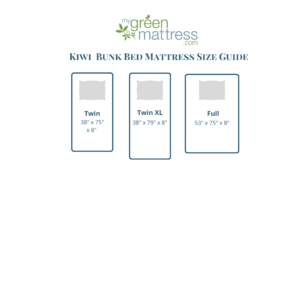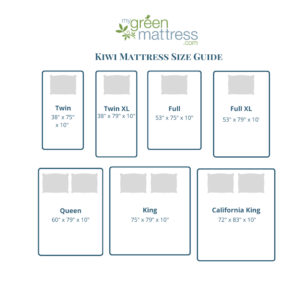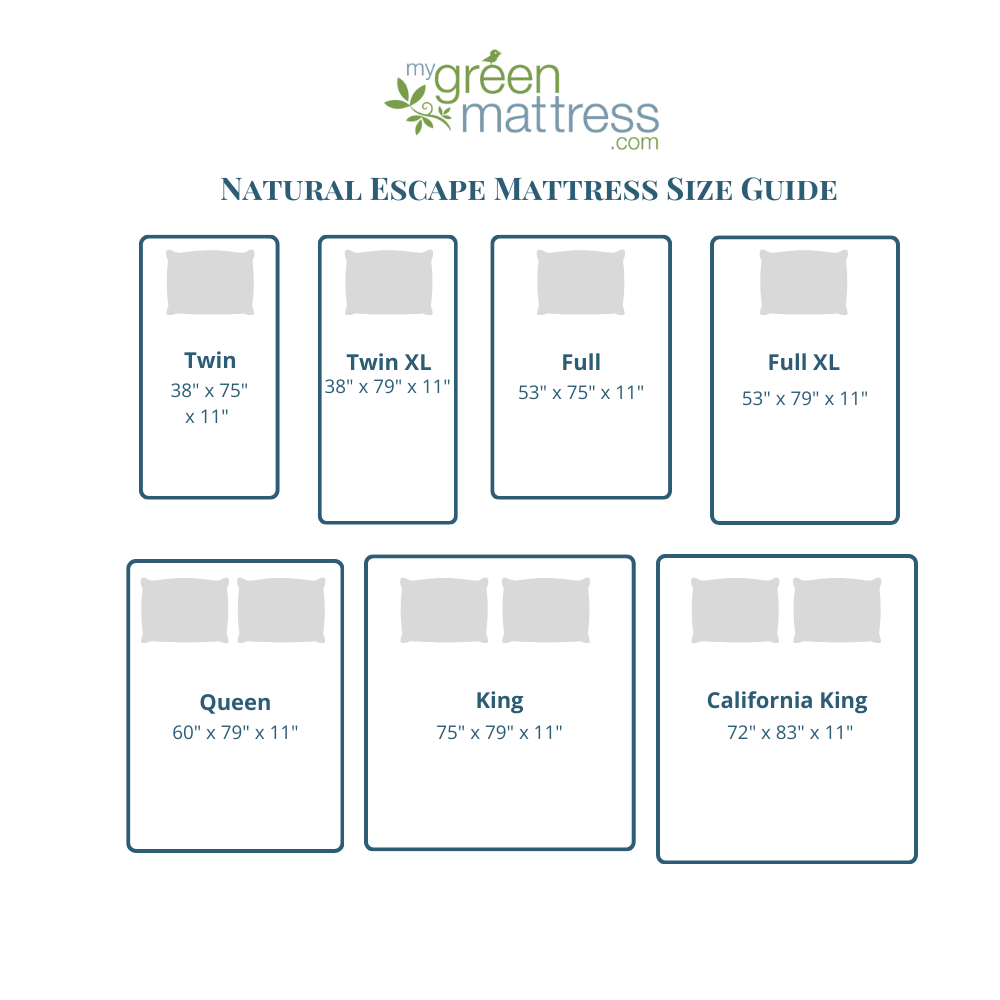Getting as much use out of your mattress in 10 years as you do on day one is a matter of proper mattress care. Unfortunately, many people don’t know how (or don’t care) to get the maximum degree of longevity and comfort out of their mattress.
Caring for your mattress is a simple and straightforward process that can become fun and memorable with practice. We compiled all of the best mattress care techniques so you can get right to the good stuff. Keep reading to learn how to care for your mattress no matter how long you’ve had it.
Opening Up Your Mattress
Buying a new mattress is an exciting time when you know you’re about to get the best sleep you’ve had yet. The mattress unboxing process can be a little tricky if you’ve never done it before, so it’s worth learning about.
If you’ve ordered your mattress online, it normally comes in a box (including ours). In order to get your mattress ready for use, you have to remove it from the box, unroll it on a firm flat surface, and cut the plastic wrapping.
Most of the time this is a two-person job due to the size and weight of a mattress. It’s best to give yourself and the person you’re working with plenty of space so you can move around without concern of bumping into objects or getting in the way of anything.
There’s more to do once your mattress is on your bed or flat surface, though. Here’s how to care for your mattress as soon as you receive it:
- Ensure that the support system you’re using for your mattress is weight-graded for your mattress size. You don’t want your bed to suddenly break because your support system wasn’t sufficient.
- Make sure your support system isn’t resting on or too close to any structural risks. This includes air vents, holes, and floor indentations.
- Use a bed frame or another system to cushion the corners of your mattress from walls and other furniture. This is a minor point, but your mattress will wear down faster and become frayed if the sides are constantly bumping into things.
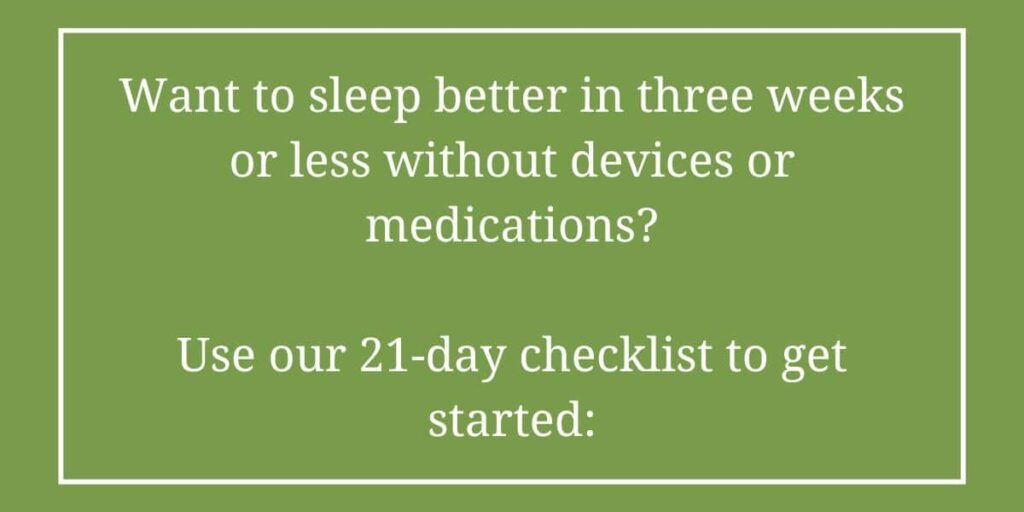
Our mattresses contain supportive filling materials like wool, organic cotton, and latex that will compress somewhat when you first start sleeping on your new mattress. We recommend rotating the mattress–head to foot–once a month for the first three months to ensure that it breaks in evenly.
After that time frame, we recommend rotating your mattress once per calendar season (or every three to four months) to prevent body impressions. Within a few weeks to months, your mattress will have the perfect degree of firmness-to-softness and you’ll never want to leave the bed again.
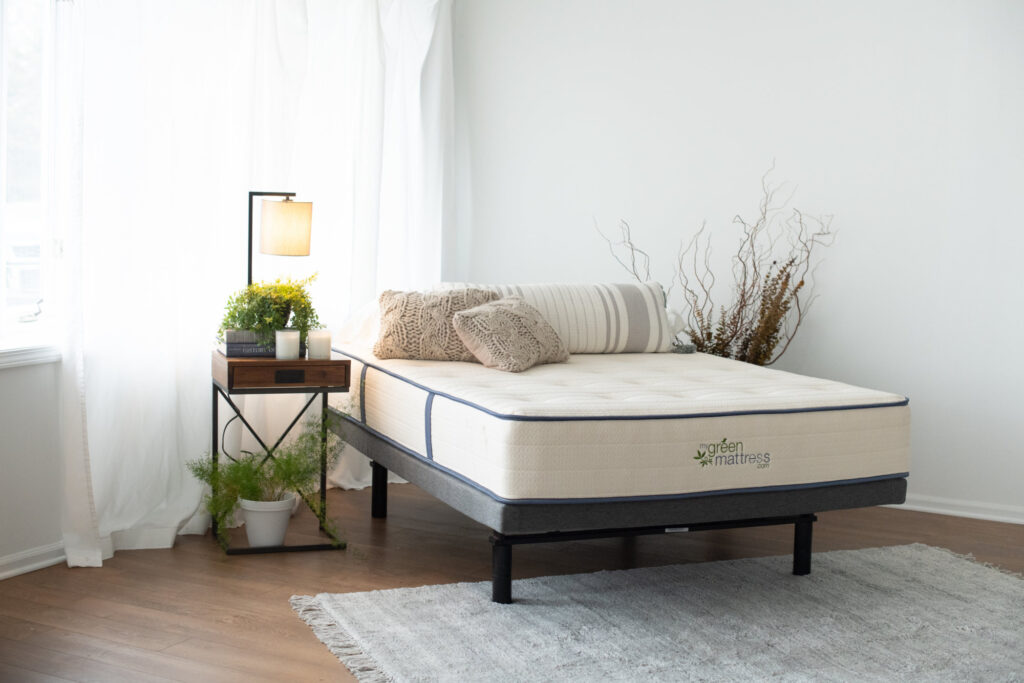
Regular Mattress Maintenance
Engaging in regular maintenance for your mattress is necessary to promote its longevity. Many mattresses can last longer than 10 years but it’s not as common to see this as one may think.
There are several key practices to engage in that ensure the greatest performance for your mattress from day one until it’s in total need of replacement (hopefully two decades from the day you receive it). Here’s how to care for your mattress on a regular basis:
Rotating Your Mattress
Rotating your mattress is the simplest and fastest way to keep its entire surface comfortable and even. To rotate your mattress, all you need to do is the following:
- Remove all sheets and other bedding materials on your mattress, including toppers and protectors.
- Take the head of your mattress and rotate it down to be in the position of the foot of the mattress.
- Ensure your mattress is still positioned correctly on your box spring and mattress frame.
That’s it! This is all you need to prevent the likelihood of body indentations in your mattress.
Using a Mattress Protector
A mattress protector is the one layer that sits between your mattress and your bedsheets. It’s designed to protect your mattress’ quilted surface against excess sweat, moisture, dust mites, and dirt particles.
When your mattress is brand new, it’s completely dry and maximally supportive. As you lie on it over the course of years, naturally some dead skin cells and moisture are going to accumulate on the surface of your mattress. 99% of the time you won’t see this happening in real time; you’ll simply notice its effects after months or years have passed.
Mattress protectors collect this naturally-occurring moisture and dirty buildup so you can wash the protector instead of the surface of your mattress every time. Applying a mattress protector is the same as a fitted sheet. Simply order the size that matches your bed and place it over your mattress before adding bedsheets.
Changing Your Bedsheets and Pillowcase
While bedsheets and pillowcases aren’t part of your mattress, they affect your total sleep experience. It’s important to use and wash them with the same regularity you do any other part of your bed.
Here are our tips on pillowcases and bedsheets to ensure maximum freshness and usability:
- Wash your bedsheets ideally once per week, but no less than every other week. Your bedsheets are the first material that capture incremental moisture, dead skin, and dust. Without cleaning them regularly, you’re quite literally sleeping in a growing amount of grime.
- Wash your pillowcase(s) as frequently as you clean your sheets. Whether or not you drool when you sleep (yes, it happens–and it’s rather common), your pillowcase can get dirty quickly. Wash it at least once every other week and always have replacements available.
How to Clean Up Spills on Your Mattress
As you’re going about your daily life, spills can happen. Whether you were eating and drinking on your bed, a ceiling leak shows up, or a pure accident occurs, it’s helpful to know how to clean things quickly and effectively.
Follow these steps to clean up a variety of mattress messes:
- Get cleaning supplies immediately. You may need paper towels, a bucket, sponges, or any and all of the above.
- Remove bedsheets, toppers, and protectors if the spill has penetrated that far. Any part of your bed that the spill has touched needs to be cleaned.
- Smoothly wipe as much of the spill off of your mattress as possible. If the spill involved solid materials, the sooner you can get it off, the better. This will prevent any seepage through mattress materials.
- Start blotting areas damaged by liquid. Any large liquid spills should be addressed rapidly because they can cause a lot more damage internally. Your mattress may develop mildew or mold if this isn’t dried up quickly. Blot any large puddles with a towel first, then apply baking soda over the spill as soon as possible.
How to Wash Your Mattress
Washing your mattress is similar to cleaning a spill off of it, but there’s more to it than that. Mattress cleaning should be done with the right materials and cleaning supplies to ensure the best results.
Here’s how to wash your mattress on a regular basis:
- First vacuum your mattress. Vacuuming your bed seems like a weird thing to do if it’s your first time. This is actually the best first step because it removes any dirt particles, dust, dead skin, and anything that’s gotten trapped under your sheets. It also clears the surface for baking soda in the next step.
- Apply some baking soda. Baking soda is a universally-applicable, odorless, and tasteless cleaning agent that absorbs moisture and counteracts odor. Since it’s small enough to go through fabrics, putting it on top of your mattress is harmless and if anything keeps your mattress cleaner for longer.
- Let the baking soda sit. Baking soda works best when it has enough time to soak up all of the substances causing moisture or odor. It’s best to let it sit for several hours and overnight if possible.
- Vacuum your mattress again. Once your baking soda has done its work, vacuum your mattress again. This picks up any excess soda that’s clumped up on the top of your mattress, as well as any areas where baking soda didn’t end up being needed.
- Consider an eco-friendly, mattress-approved cleaning material. If there are stubborn spots or stains in your mattress, you can use eco-friendly cleaning supplies like the one by Good Life Solutions. This type of cleaning solution includes non-toxic substances that are easy on your mattress and the Earth. Always use a product like this in accordance with the product’s instructions.
Frequently Asked Questions About Mattress Care
Mattress care might sound complex but it’s pretty easy once you know what you’re doing. Around 40% of people polled in a recent study said they didn’t even know mattresses should be cleaned on a regular basis.
If you have more questions about caring for your mattress, worry not. We’ve done all of the research for you. Check out these frequently asked questions about how to care for your mattress and our answers:
How Do I Keep My Mattress In Good Condition?
Keeping your mattress in great condition is a matter of a few simple habits that become effortless after a few months. Maintaining your mattress includes rotating it every few months, keeping your protector and bedsheets clean, making sure spills are addressed right away, and replacing your mattress when needed.
How Do I Clean A Mattress Really Good?
Cleaning a mattress effectively requires a vacuum, baking soda, a rag or towel, and a stain cleaner. After removing all the sheets, topper, protector, and any other layers on your mattress, vacuum the entire surface. This clears up all dirt, dust, and grime.
Next, scatter baking soda across your mattress surface. Let it sit for several hours to properly neutralize odors and absorb liquid. When this is done you can vacuum the remaining baking soda once again.
The towel or rag and stain cleaner can be used to remove any persistent stains in your mattress (blood, vomit, urine, etc). It’s often best to apply the stain remover to the towel first and then use it on your mattress so your bed doesn’t have excess cleaner in it.
How Often Should You Change Your Mattress?
While mattresses can be turned over as frequently as every six to eight years, superior quality mattresses can last up to 20 years. That’s how long ours last, too. A structurally sound mattress made with superior materials can outlast any of the mass-produced beds that are ubiquitous online.
Shop our organic mattresses now and take advantage of month-to-month payments if you prefer. Have any questions? Our knowledgeable customer service team is just one message away.










